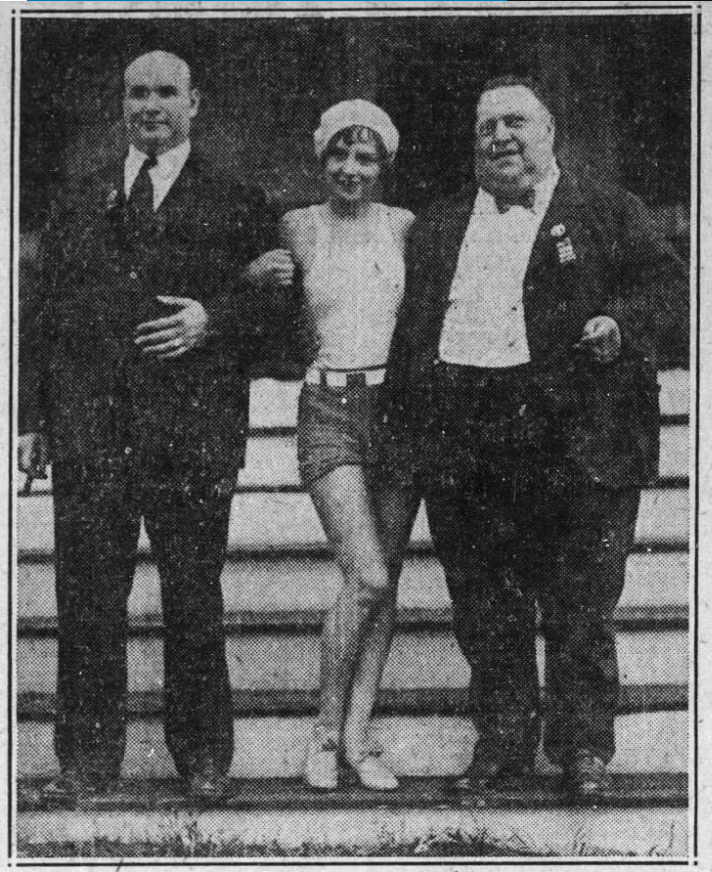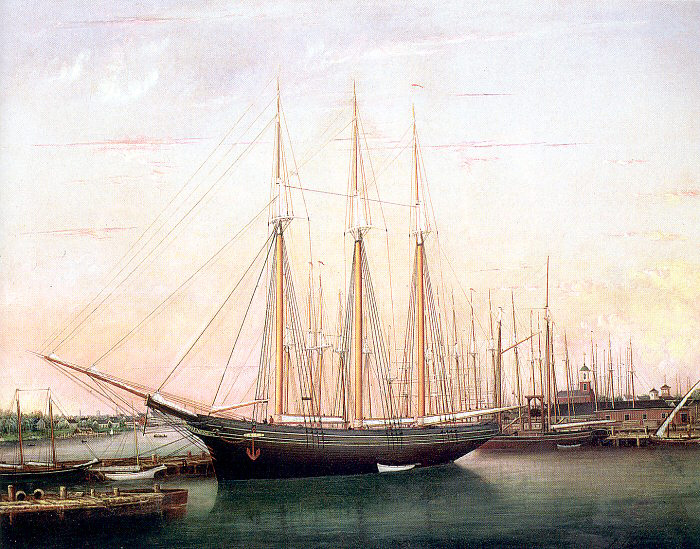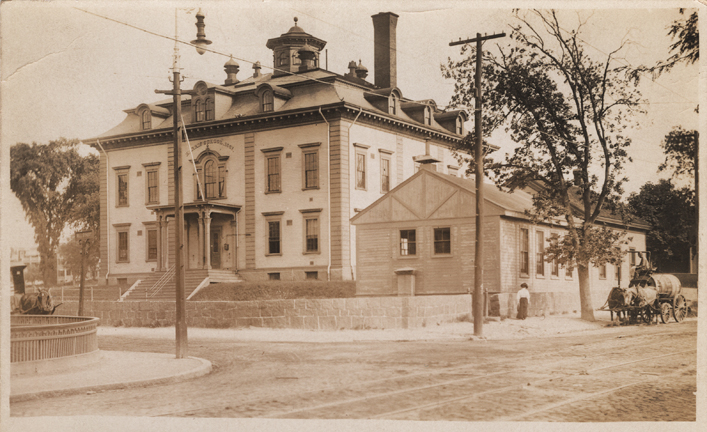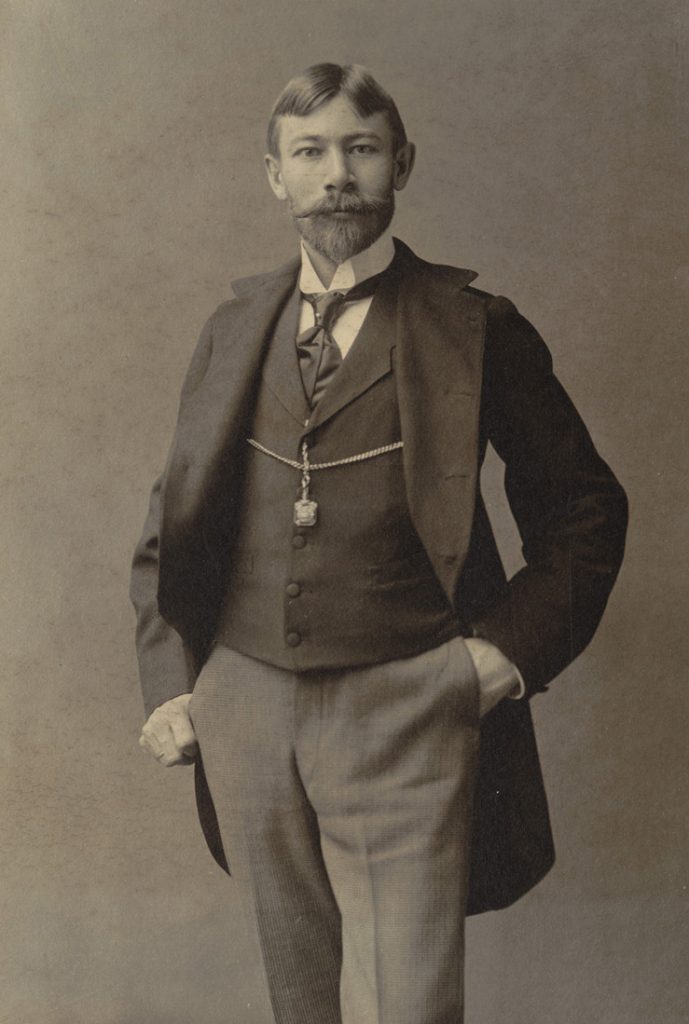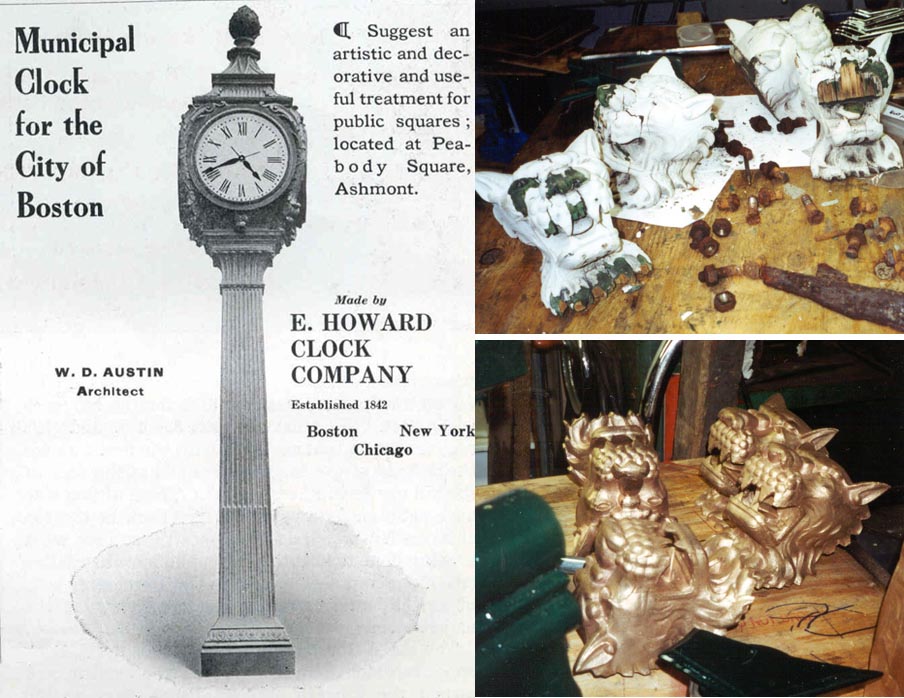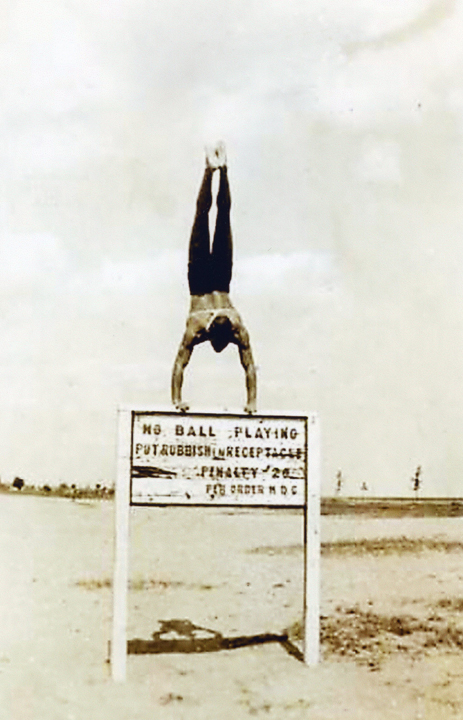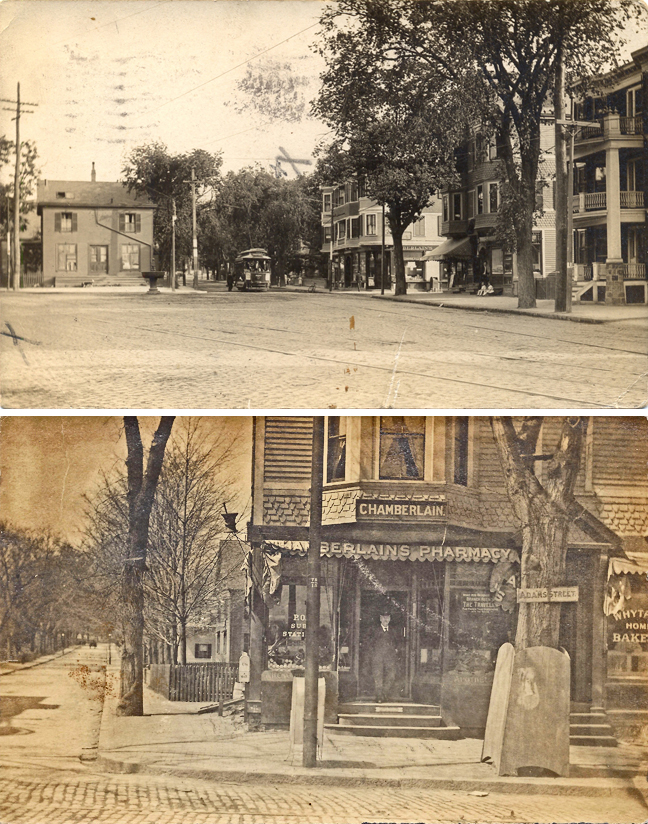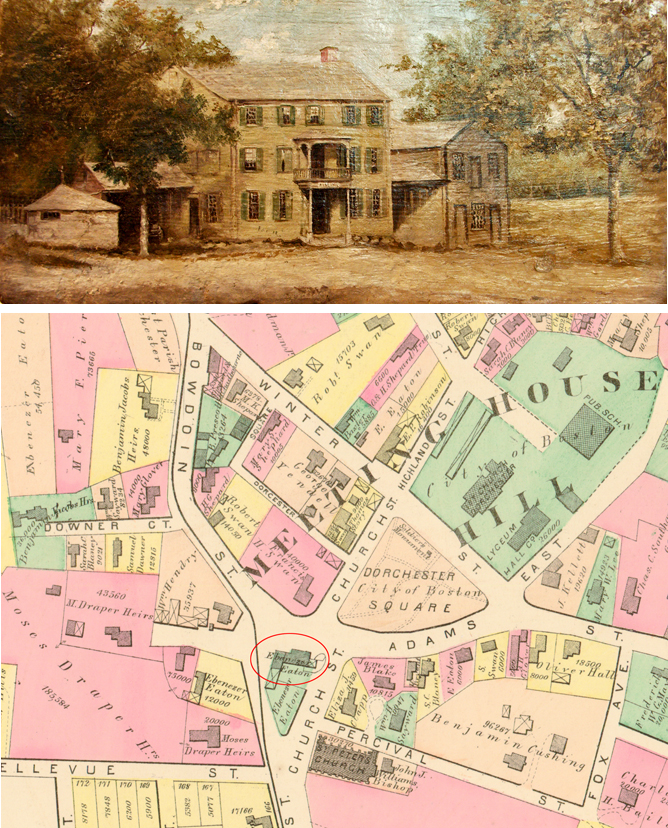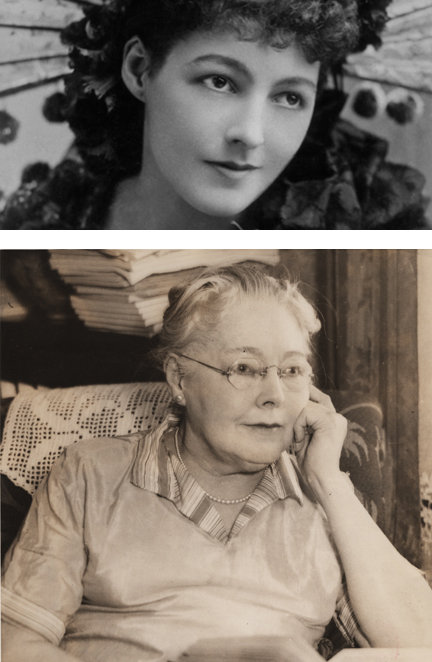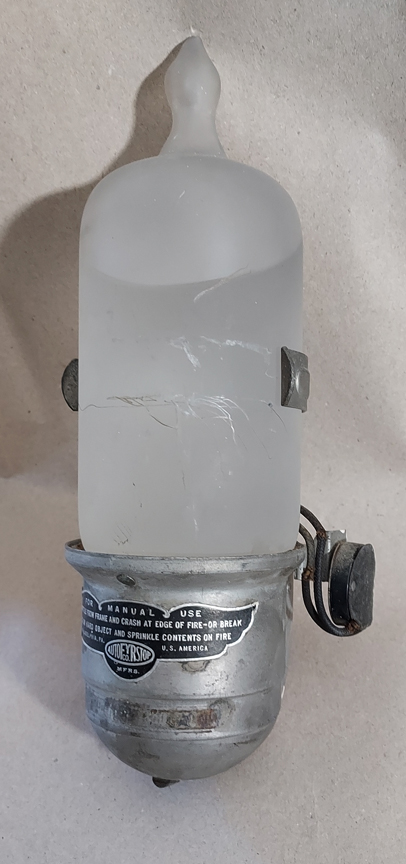
Fire Grenade
Dorchester Illustration 2666
In the period from the 1870s to the early 20th century, one method of fighting fire was the wall-mounted fire grenade. The grenade was a glass container with a fire-retardant liquid inside. Fire could move quickly through a home due to numbers of flammable items, such as, candles, oil lamps, wood and coal for stoves, clothing, upholstery, etc.
Earlier in the century, homeowners depended on neighbors to bring leather fire buckets to help pour water on a fire, often without much success. The fire grenade was meant to stop a fire at the start. The glass globe was grabbed from its holder and thrown at the base of the fire. The glass would break and the contents (water or carbon tetrachloride) would vaporize and help to put out the fire.
The grenade pictured in today’s illustration came from a Dorchester home. The grenade was made by the AutoFyrStop Company of Philadelphia, which described their extinguishers as both automatic and decorative. Ours was made with frosted glass. Many others were manufactured using blue, yellow or green glass molded into more shapely oval designs. As you may imagine the grenades sometimes failed to extinguish the fire, which then consumed the house. The grenades were most effective when a fire was just breaking out.

